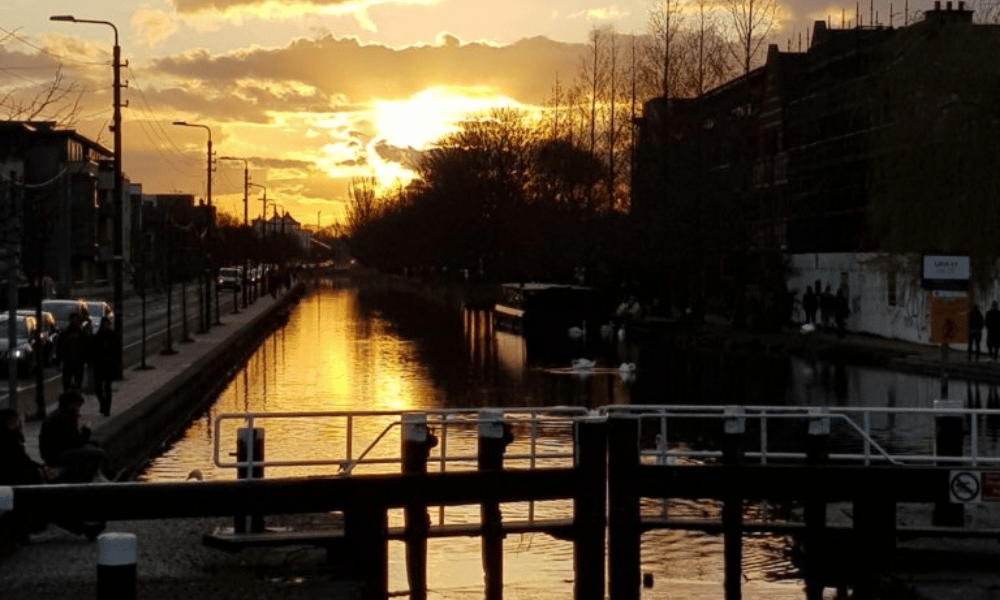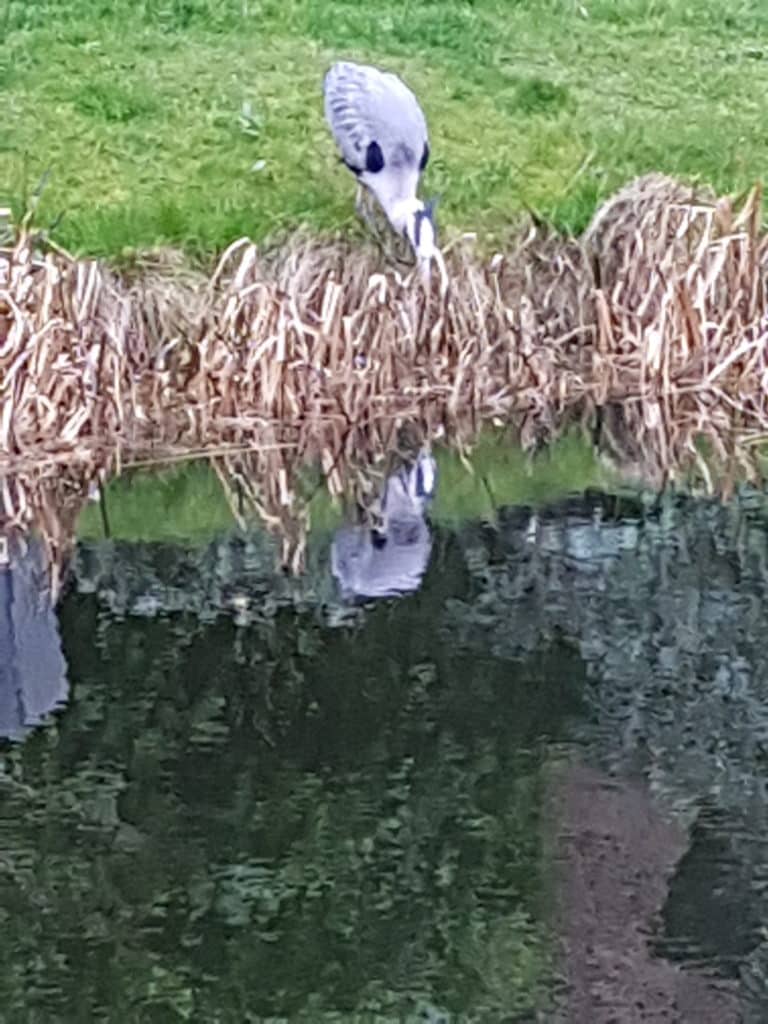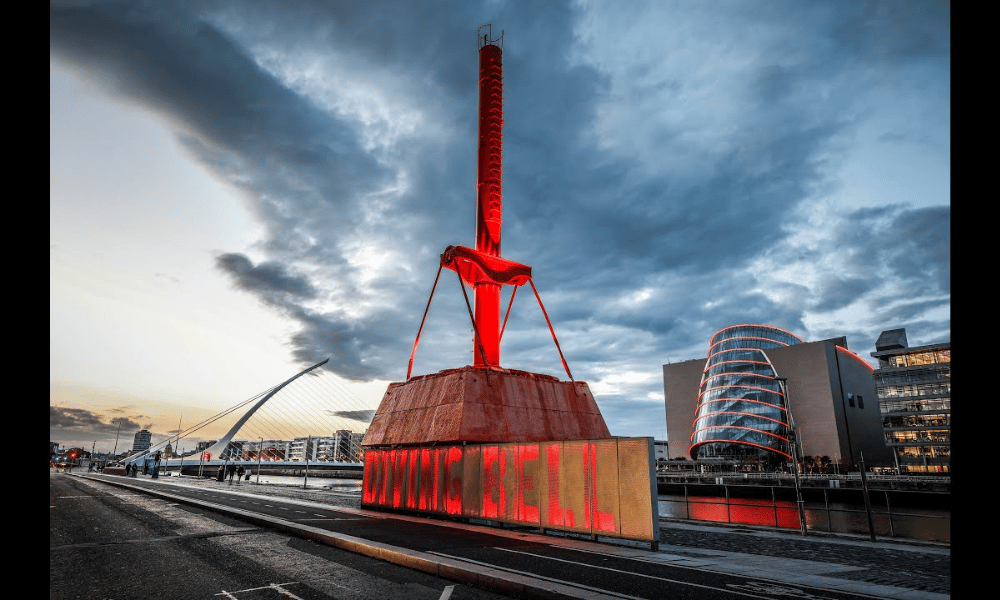In the autumn there is no nicer walk in Dublin city than along the banks of the Grand Canal on the south side of the city. The canal is a riot of colours with dappled sunshine on the water.
The city of Dublin is encircled by two canals built in the 18th century, the Royal and the Grand. They were incredible engineering feats and were built to link the country from east coast to west coast via the vast Shannon River.
Begin your walk from Portobello, Dublin 8 where La Touche Bridge, built in 1791 divides the city centre from the suburbs with Rathmines on the south side of the canal. Portobello is like the New York Village of Dublin and full of trendy cafes, artisan houses and alternative culture. At the bridge, three districts converge, Dublin 2, 6 and 8.
There is a story told many years ago, of Civil War armaments being spotted in the canal. It brought consternation to the three adjoining police departments. None wanted to take responsibility for the paperwork involved. I believe Rathmines Police department, stood up to the plate in the end.

The next section of the canal is leafy and wooden jetties allow people to sit and dangle their feet while having a picnic. This section of the canal has two pubs, the Portobello, (currently closed, but being painted, a sign that it will reopen soon – a great spot for late-night drinking, when allowed) and the Barge.
Crossing Charlemont Bridge, look right and you will see the popular suburb of Ranelagh, there is a lovely little park here under the railway bridge for a detour. To the left Charlemont Street has become the New York Canyon of Dublin with massive high-rise buildings darkening the street.
The leafy walk along the tow path takes you to Eustace Bridge which links Upper and Lower Leeson Streets. My granny had two boarding houses here at Nos 5&6 where she housed young women from the country in one and medical students from RCSI in the other. O’Brien’s pub across the road was a favoured haunt of my great grandad
As we walk further the journey is taking us closer to the more upmarket parts of the city. The really leafy walk from Leeson Street to Baggot Street is bounded by the fine houses of Mespil Road. Here there are barges moored and some operate as restaurants and venues for parties.

These barges, pulled by huge carthorses would originally have moved goods, particularly Guinness stout along the canal to the west coast. As you cross Macartney’s Bridge at Baggot Street, look right and you will see a life-size replica of these Herculean horses.
A little hump-backed bridge links Mount Street Crescent and Percy Place is called Huband Bridge. At the latter end of the week there is usually a food market along this stretch. Though with fewer people in the offices around, it is not as big as it used to be.

Watch out here for the heron, he has made his home along this stretch of the canal for many years and can at times be seen cheekily standing on people’s doorsteps.
Crossing over Northumberland Road by McKenny’s Bridge leads you to the next stretch of the canal. I always think this the romantic part of the waterway. The civil registry office for weddings is nearby on Grand Canal Street and at times you can see wedding parties having photographs taken at the lock gate. It is a very picturesque place for a bridal party.
Over McQuay’s Bridge and the journey veers a little away from the canal as the walk squeezes between former warehouses and the Grand Canal Dock. Here you will find lots of canal boats and pleasure craft moored, some will have people living on them.
The next stage of the walk is into the modern Dublin. It is not even a Phoenix. This area was a derelict, somewhat sooty, dirty, industrial and a watery wasteland. Now it would give the top financial cities in the world a run for their money.
The redevelopment of the Docklands is a joy to see. The former wastelands are now shining office blocks, balconied homes for Googlers, trendy hotels, fresh food markets and smart restaurants. The formerly smelly Grand Canal Basin is now pristine, swans lounge around as wakeboarders hurtle by and people flock to eat lunch.
The last leg of the journey takes you right to the River Liffey, Joyce’s own Anna Livia. But stop at the Diving Bell and read the history of how the Liffey was tamed in the 19th century and became the walled commercial channel it is today. Look across the river to more of Dublin’s growth and see the tilted Convention Centre framed by Spanish architect, Santiago Calatrava’s Samuel Becketts Bridge.




